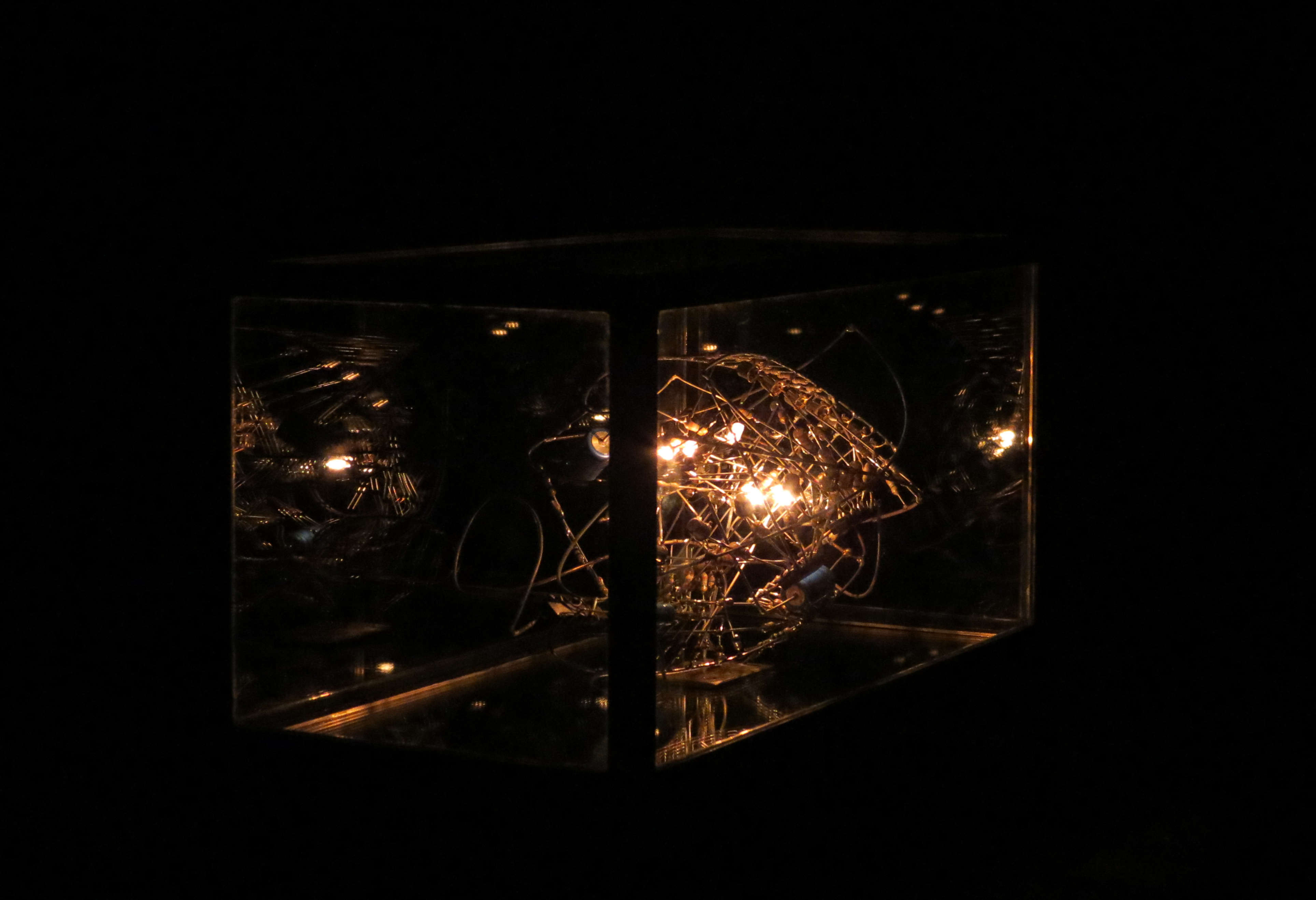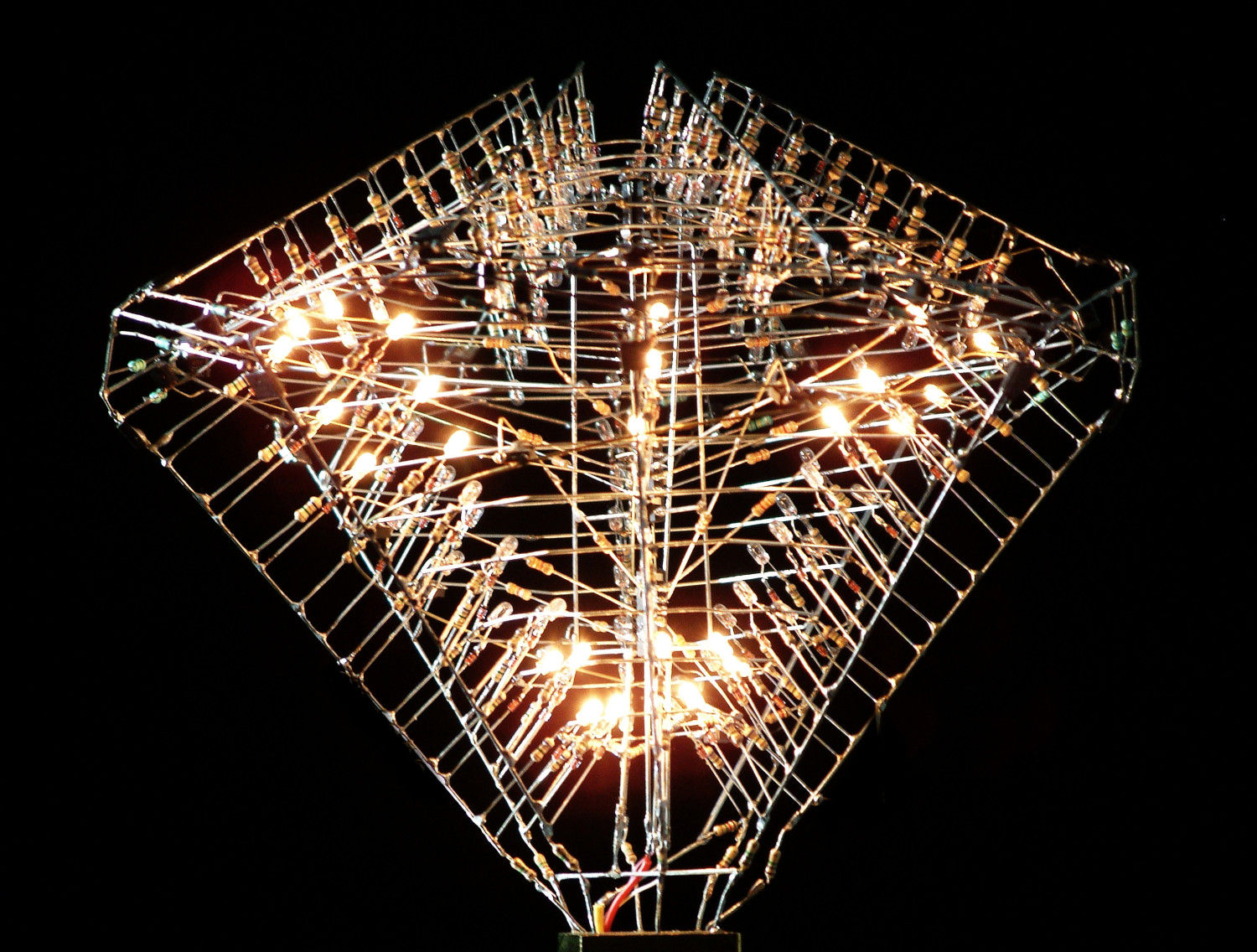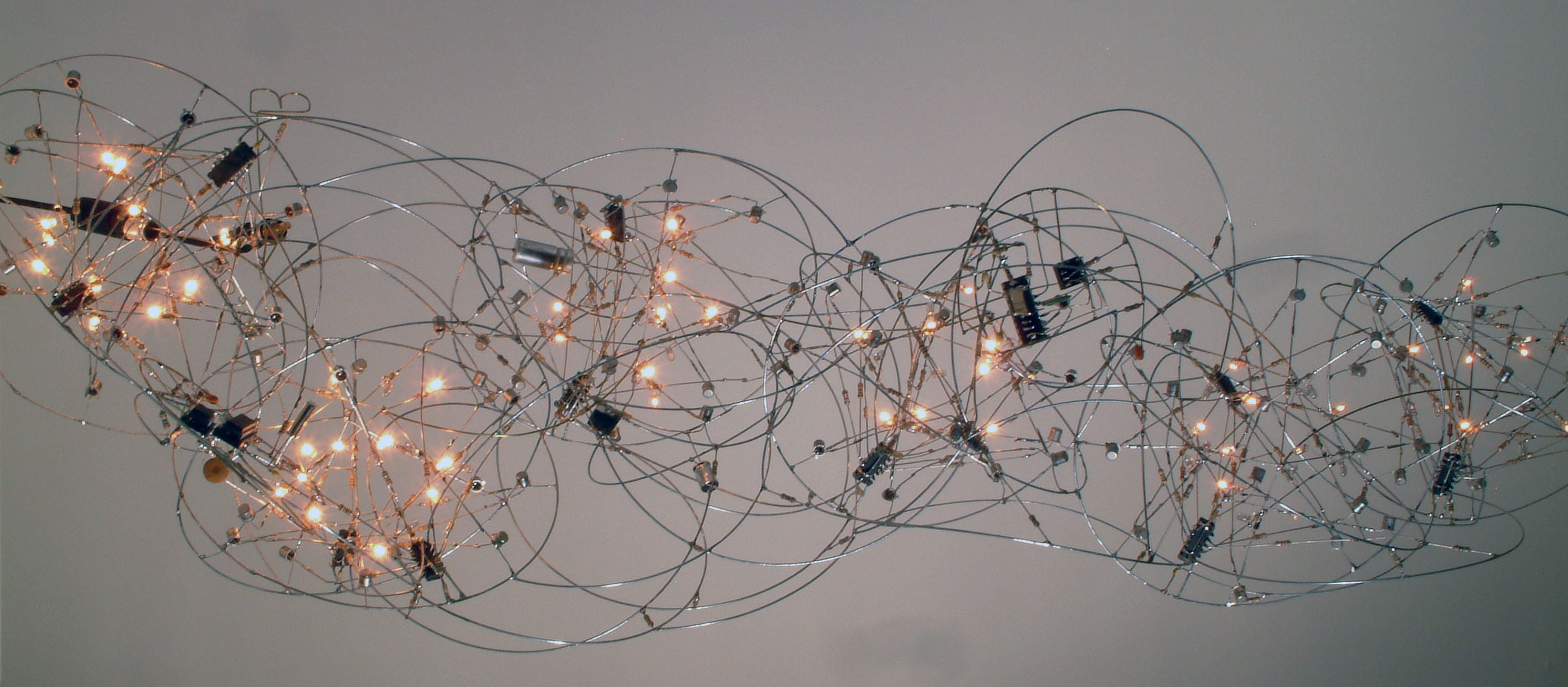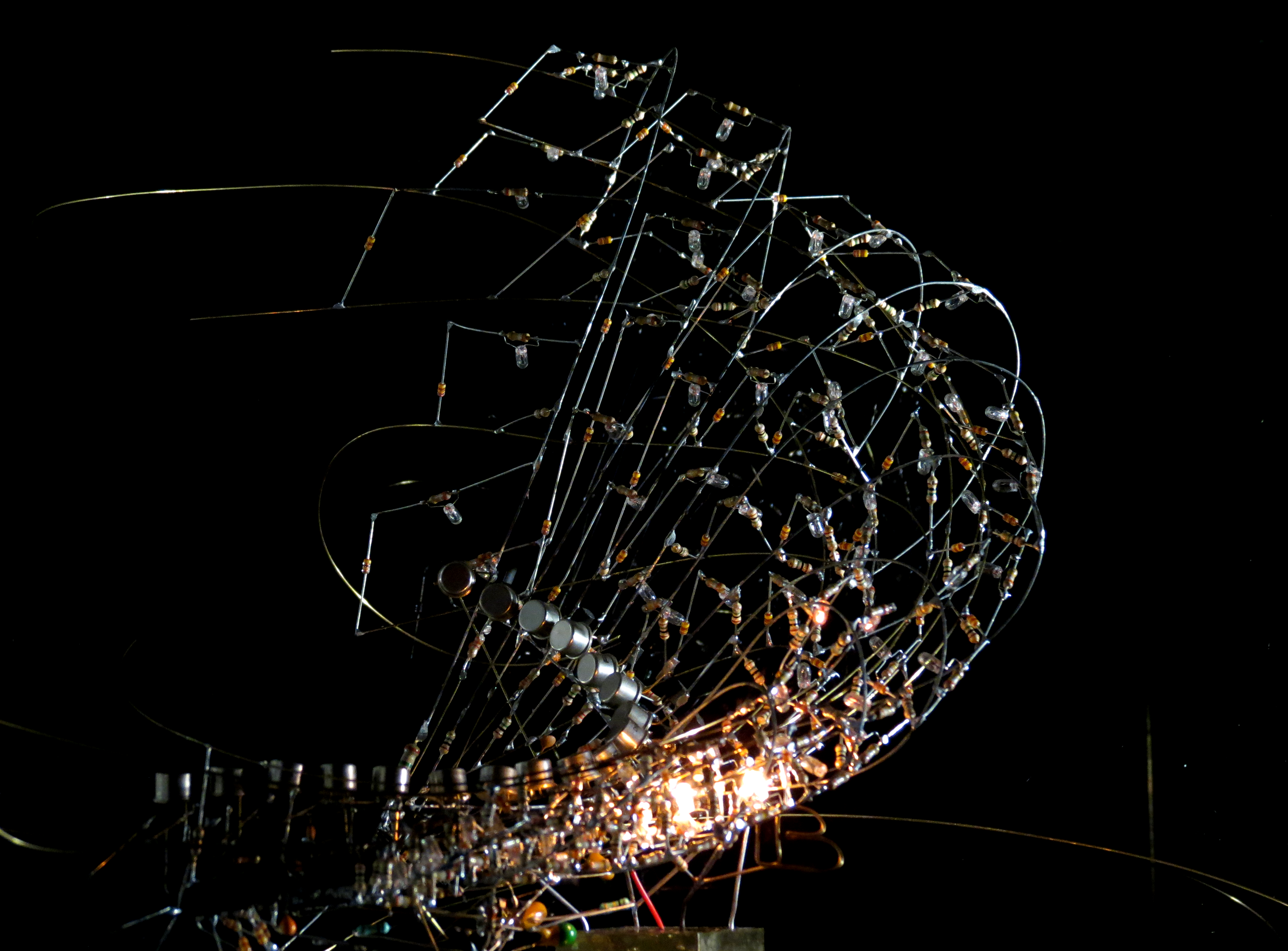a touch of chance
translated with Goggle traduction

Everything that exists in the Universe is the result of chance and necessity, Democritus said
Is this to thank fate for sparing me a destiny as a teacher? I place Chance at the heart of the first Luchrone. The luminous movements of “Nemo” are produced by uncertain frequencies from old components that I purposely chose from a laboratory trash can for their lack of precision.

In 1984, exhibited at the EHESS, Nemo and other Luchrones built on the same principle, were the center of a lively discussion with science students. One of them opposed me that, knowing the characteristics, even imprecise, of my components, and from the initial condition which is the start-up, one can predict the behavior of my sculptures. A prediction that he admits is unlikely to be feasible that day - but conceivable in the future.

So I content myself, to begin with, with an “approximate” random generator - this idea pleases me enormously: the randomness that I have tinkered with is not reliable. Is that really serious?

Diamant 1980
My scores are drawn randomly from the virtual “shelves” of the library contained in the memory chip. Then, in the 2000s, I explore the combination of rhythms and forms. Sometimes the scores are played in a loop but with slight variations (phasing) inspired by Philip Glass. Sometimes they combine (almost) infinitely. It is enough to assemble several small calculators in the same work to reach a colossal number of melodic combinations of light. The difficulty is to maintain, from one piece to another, a certain coherence.

Contresphères 2007
Indeed, before taking full advantage of the order/chaos confrontation, a good practice of the rules of composition is useful. And, for that, old Bach is the Master. In the following years, I will work less on chance than on the combination of light movements by building my light processing tool “Fux”. As there are word, image or sound processors, “Fux” is the tool that helps me write and test my light scores.

Abondance - 2010
The first Luchrones with bulbs are animated by “random” oscillators that feed counting circuits. Around 2010, microcontrollers and memories arrive almost at the same time as white LEDs.